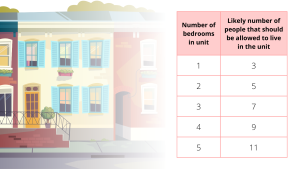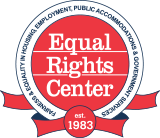Arbitrary Limits on Number of People Who Can Live in a Home May Discriminate
By Nick Adjami and Susie McClannahan
August 2, 2022
Under the Fair Housing Act, it is illegal to discriminate in housing on the basis of seven protected classes, including race, color, national origin, religion, sex, disability, and familial status. Familial status refers to the presence of children under the age of 18 in a household. This means that it is illegal nationwide to discriminate in housing against families with children.
Unfortunately, such discrimination still occurs. 2,276 cases of familial status discrimination were reported in 2020, the most recent year for which data is available. Only complaints based on disability or race were more frequent. Familial status discrimination can have severe consequences. As rents rise and cities like Washington, DC prioritize the construction of smaller units, it is becoming more difficult for families to find housing. Familial status discrimination adds another unfair hurdle for renters to overcome.
Some examples of familial status discrimination can include:
- A landlord refusing to rent to families with children;
- A property manager trying to evict a couple after finding out they’re expecting a child;
- Management refusing to let children use the community pool; and
- Management only enforcing the rules, such as noise violations, against families with children, and not against adult-only households.
Another form of familial status discrimination involves restricting the number of individuals that can live in a home. Many cities and counties have occupancy standards, which limit the number of people that can live in a unit, but some landlords might try to set a lower limit than the city or county. Doing so could be familial status discrimination.
For example, let’s say that a city allows five people to live in a two-bedroom apartment, but a landlord with a two-bedroom unit says they will only rent it to a family with three or fewer people. This is likely illegal familial status discrimination, since the landlord is arbitrarily excluding larger families from living in the apartment.
But how do you know what your local occupancy standard is? Each city and county may be different. Thankfully, the US Department of Housing and Urban Development has released helpful guidance on this issue. When considering whether a housing provider’s occupancy restrictions may be illegally discriminatory, many factors like the size and layout of the unit and the size of each bedroom should be considered. However, a good rule of thumb for how many people can reside in a unit is that generally two people can reside in each bedroom plus one additional person in the home. The chart below shows the likely number of people that should be allowed to live in homes of various sizes.

If a landlord attempts to further limit the number of people that can live in the unit, it may be illegal familial status discrimination. If you believe you may have experienced housing discrimination in the Greater Washington, DC region, you can report your experiences to the Equal Rights Center by calling 202-234-3062 or emailing info@equalrightscenter.org.
The information contained in this publication is not legal advice and should not be construed as such. For legal advice, please contact an attorney.
———
If you believe you may have experienced discrimination in housing, you can contact the Equal Rights Center. To report your experience, please call 202-234-3062 or email info@equalrightscenter.org.

